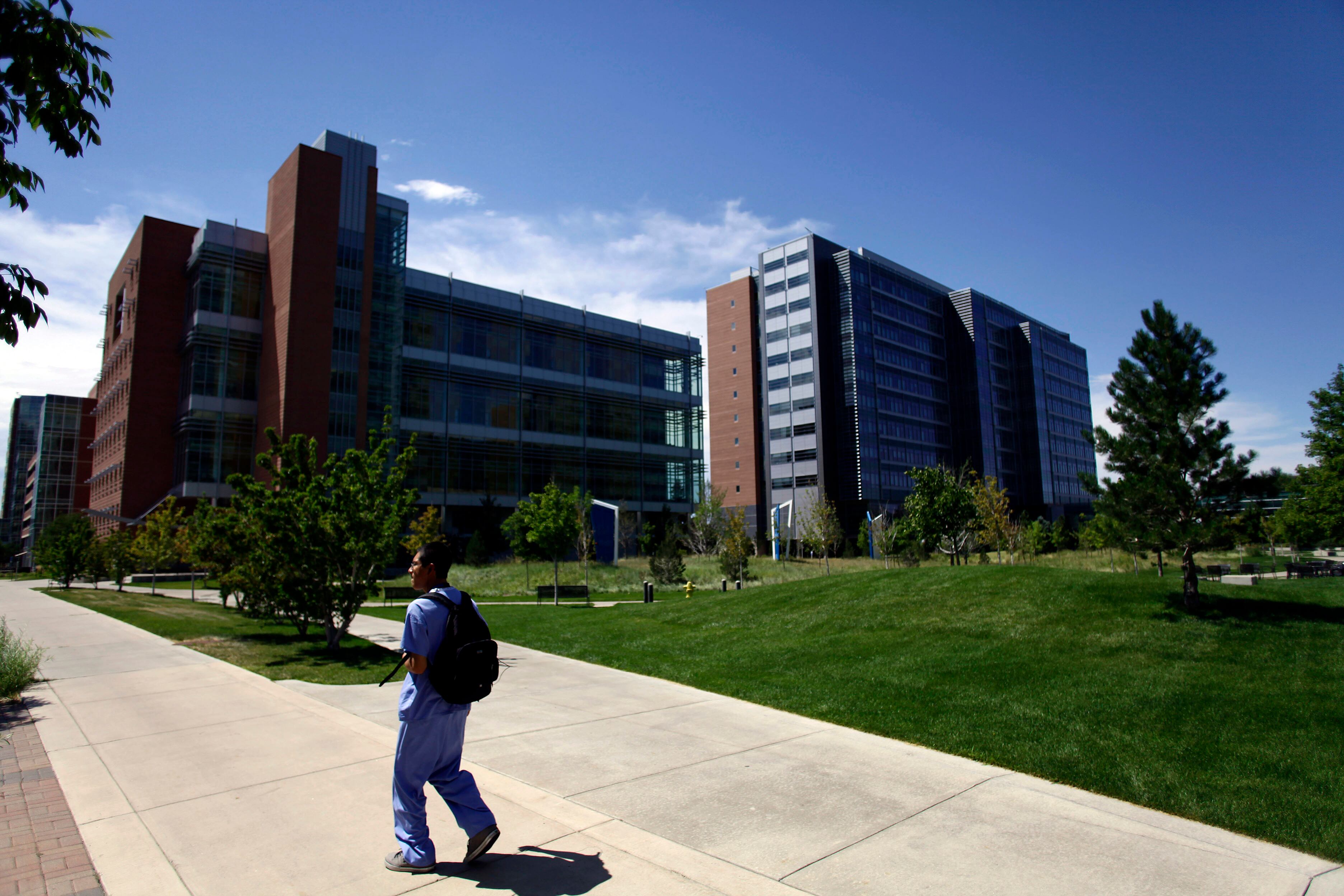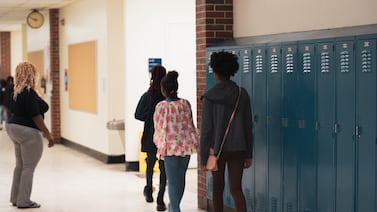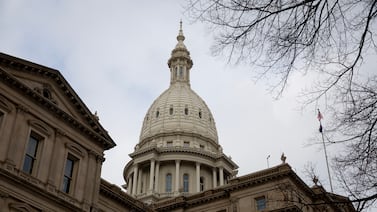Sign up for our free monthly newsletter Beyond High School to get the latest news about higher education in Colorado.
Cathy Bradley has dedicated her career to combatting cancer — an illness that killed 8,411 Coloradans in 2023 and is the leading cause of death in the state.
As the University of Colorado Anschutz’s Cancer Center deputy director, Bradley helps oversee lifesaving treatment and prevention to fight the disease. And for years she’s participated in cancer research supported by the federal government, such as studies on how supporting caregivers leads to better outcomes for patients.
However, the center’s cancer research, and medical research across the state, is under threat after the Trump administration cut how much money institutions receive from the National Institutes of Health to support research projects.
In an effort to rein in government spending, the Trump administration wants to halve how much grant recipients can use for “indirect costs.” These costs typically pay for expenses such as equipment, facilities, maintenance, and research assistants. While the funds are referred to as indirect, experts say they’re crucial for colleges and universities to be able to conduct the research.
On average nationally, about 28% of federal grant funds are spent on indirect costs. The Trump administration said it will limit that amount to 15% for existing and future grants. This would mean approximately $4 billion in savings for the federal government.
Colorado university officials said the Trump administration’s decision will cause Colorado to lose much more than funding and will have a “crushing effect” on the state’s health care system. They said it will hamper researchers’ ability to develop treatments and practices that save lives, hurt the economy, and hinder the training of more medical professionals.
“We’re the wraparound,” Bradley said. “If we’re not out there preventing cancer, then people get cancer and they get it at a late stage, and it costs a ton of money and they die. That’s just it.”
Several lawsuits have been filed, including one from Colorado and 21 other state attorneys general against the U.S. Department of Health and Human Services, the National Institutes of Health, and agency officials. A federal judge has since blocked the cuts, meaning they are temporarily on hold.
Bradley, who also is dean of the Colorado School of Public Health, said that if the cuts happen, the three-campus partnership would lose about $8 million annually in funding used for indirect costs. She said it would be impossible to replace those funds. Private donors have strict rules on how money can be spent, and the school doesn’t have an endowment to replace that funding.
That all would add up to a lower standard of health care for Coloradans now and into the future, Bradley said.
What’s at risk in Colorado under Trump’s NIH cuts
The National Institutes of Health is the world’s leading public funder of medical research and contributes to a vast majority of such research nationwide.
The agency said in a memo about the cuts that it spent $35 billion nationwide in 2023 on almost 50,000 grants that supported 300,000 researchers at 2,500 universities, medical schools, and other institutions.
The University of Colorado Anschutz Medical Campus brought in more than $300 million in NIH grants in the 2024 fiscal year. About $85 million would have gone to indirect costs. Under the new lower rates, the university would receive just $36 million. The university has issued a declaration of support for the lawsuit.
In a statement, an Anschutz spokesperson said the school helps support over 1,000 clinical trials, which have more than 14,000 people enrolled. University researchers have studied solutions to problems such as opioid abuse, mental health, diabetes, and obesity.
The CU Anschutz Medical Campus hospitals also serve more than 2 million adult and pediatric patients yearly. The loss of indirect funding could also affect the care the university provides, the spokeswoman said.
“These cuts to NIH funding jeopardize the foundation of our life-saving research,” said Julia Milzer, a university spokesperson, in a statement. “Reduced research capacity means fewer scientific discoveries, job losses, and delayed advancements on therapies and cures that could improve — and save — lives.”
The University of Colorado Boulder, Colorado State University Fort Collins, and the University of Northern Colorado would also be affected by the cuts.
‘It really is almost absurd,’ university expert says of research cuts
In announcing the cuts, the National Institutes of Health under Trump said in its memo that it is “vital to ensure that as many funds as possible go towards direct scientific research costs rather than administrative overhead.”
The statement also said the change brings federal funding in line with private donors, who have lower caps on indirect costs.
But the Association of Public & Land-Grant Universities has said that a cut to indirect funding is not just a cut to administrative overhead but amounts to a cut to research.
Universities already pool numerous funding sources such as tuition, other research grants, cooperative agreements, endowments, and state money. Researchers have come to expect the federal funding to cover the costs that others can’t or won’t subsidize because research can be very expensive.
For example, Bradley said some laboratories might need facility upgrades and higher maintenance. CU Anschutz has rooms that need thicker walls because researchers work with radioactive materials to test samples.
The Colorado School of Public Health would need to raise over $200 million in endowment funding to pay for the $8 million annually it needs for infrastructure, according to a spokesperson.
Bradley added it’s not possible to use existing private funding to make up for cuts because so many funding sources place restrictions on whether those grants can be used for indirect costs.
“There’s just no other way to pay for it,” Bradley said. “You can’t charge students enough tuition to cover that kind of research.
Colorado Department of Higher Education Executive Director Angie Paccione agreed universities are limited in how much money they can raise. While larger private universities might be able to pull in big donors, public universities have a harder time doing so.
She added that the indirect costs aren’t waste, but crucial to making the research happen.
“Do we just say we’re not going to participate in the kinds of research that will solve the critical problems that our country faces?” Paccione said. “It really is almost absurd. And I don’t know who is suggesting these kinds of cuts, but they must not know anything about research institutions.”
Consequences for Colorado’s economy and next generation
Others in Colorado and nationwide have condemned the Trump administration’s decision.
“Taking away critical research funding undercuts innovation, stifles economic growth, and makes America less competitive,” said Ally Sullivan, a spokesperson for Democratic Gov. Jared Polis.
And the American Council on Education’s President Ted Mitchell said in a statement the cut is misguided and “sabotages the decades-long partnership that has ensured U.S. global leadership in life-saving medical research.” The council is party to one of the lawsuits.
Colorado School of Public Health Professor Glen Mays, an expert in health systems, management, and policy, said every dollar brought in through grants goes back into the state’s economy seven times over. The research also helps train medical professionals who work in the state and treat patients, he said.
“This would be a major drag on the overall economy,” Mays said.
And there will be other spillover effects that have long-term consequences, he added. The indirect costs help pay for students to learn valuable medical skills.
Students then go on to become doctors in their community or try to find cures and new treatments, he said.
“These are the students who are going to go out and do stuff in the real world to improve health,” Mays said. “Basically, that is going to slow our progress in improving health across the state.”
Jason Gonzales is a reporter covering higher education and the Colorado legislature. Chalkbeat Colorado partners with Open Campus on higher education coverage. Contact Jason at jgonzales@chalkbeat.org.






